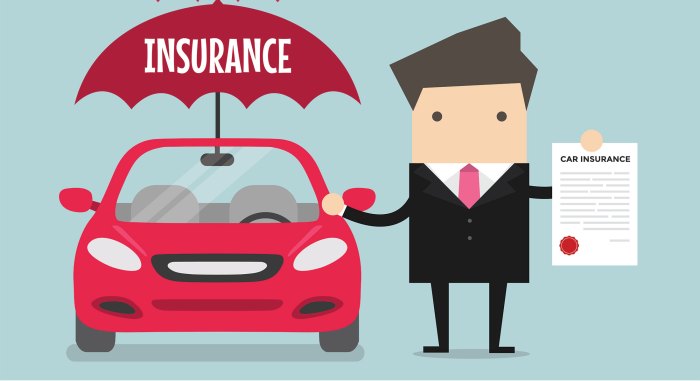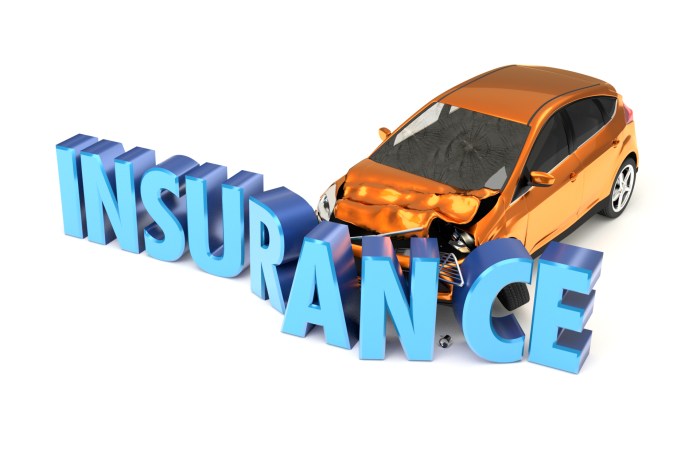In the realm of personal finance, auto insurance stands as a cornerstone of financial protection for vehicle owners. It serves as a safety net against the unexpected events that can arise on our roads, providing peace of mind and safeguarding our financial well-being.
Auto insurance policies offer a range of coverage options, each tailored to specific scenarios. Understanding these options and the factors that influence insurance premiums is crucial for making informed decisions and ensuring adequate protection.
Insurance Coverage Options
Auto insurance policies offer a range of coverage options to protect you financially in the event of an accident or other covered incident. Understanding the different types of coverage and their applicability is crucial for making informed decisions about your insurance policy.
The primary coverage options include:
Liability Coverage
Liability coverage is mandatory in most states and protects you against legal liability for bodily injury or property damage caused to others in an accident you cause. It covers medical expenses, lost wages, and pain and suffering of the injured party, as well as damage to their vehicle or property.
Collision Coverage
Collision coverage pays for damage to your own vehicle if you collide with another vehicle or object, regardless of who is at fault. It covers repairs or replacement of your car, up to the actual cash value of the vehicle at the time of the accident.
Comprehensive Coverage
Comprehensive coverage protects your vehicle from non-collision-related events, such as theft, vandalism, fire, hail, and animal damage. It also covers damage caused by natural disasters, like floods and hurricanes.
Uninsured/Underinsured Motorist Coverage
Uninsured/underinsured motorist coverage provides protection in case you are involved in an accident with a driver who is uninsured or underinsured. It covers medical expenses, lost wages, and pain and suffering.
Discounts and Savings

Insurance companies offer various discounts and savings to reduce the cost of auto insurance.
Multi-Policy Discounts
These discounts are applied when you have multiple insurance policies with the same company. For example, you may get a discount on your auto insurance if you also have homeowners or renters insurance with the same provider.
Good Driver Discounts
These discounts are offered to drivers with a clean driving record. Factors that may qualify you for a good driver discount include having no accidents or traffic violations within a certain period.
Low Mileage Discounts
These discounts are available to drivers who drive less than a certain number of miles each year. The fewer miles you drive, the less likely you are to be involved in an accident, which can result in lower insurance rates.
Claims Process

Filing an auto insurance claim involves several steps. Firstly, report the accident to your insurance company promptly. Gather necessary documentation, including a police report, medical records, and repair estimates. Submit a claim form with the documentation to initiate the claims process.The
claims process can vary based on the accident’s severity and the insurance company’s policies. In general, the insurance company will investigate the claim, determine liability, and negotiate a settlement with the policyholder or other involved parties.
Customer Service and Support

When choosing an auto insurance company, it’s essential to consider the level of customer service and support they provide.Responsiveness, availability, and ease of communication are key factors to evaluate.
Responsiveness
Assess how quickly and efficiently the company responds to inquiries and requests. Consider the availability of multiple communication channels, such as phone, email, live chat, and social media.
Availability
Determine the company’s operating hours and availability for assistance. 24/7 support is preferable, especially in case of emergencies or urgent situations.
Ease of Communication
The company’s communication should be clear, concise, and professional. Representatives should be knowledgeable and able to resolve queries promptly. Check if the company offers online portals or mobile apps for convenient self-service options.
Final Conclusion

In the tapestry of financial planning, auto insurance plays a vital role. By understanding the nuances of coverage options, premium factors, and customer support, we can navigate the complexities of this essential service. Whether you’re a seasoned driver or a new motorist, the knowledge imparted in this discussion will empower you to make informed choices and secure the protection your vehicle deserves.
FAQ Corner
What are the different types of auto insurance coverage?
Auto insurance coverage options include liability, collision, comprehensive, and uninsured/underinsured motorist coverage. Liability coverage protects against damages caused to others in an accident, while collision coverage covers damage to your own vehicle in a collision. Comprehensive coverage extends protection to non-collision-related events, such as theft or vandalism, and uninsured/underinsured motorist coverage provides protection in the event of an accident with an uninsured or underinsured driver.
How can I reduce my auto insurance premiums?
Insurance companies consider factors such as driving history, age, location, and vehicle type when determining premiums. Maintaining a clean driving record, taking defensive driving courses, and choosing a vehicle with safety features can help lower premiums. Additionally, bundling multiple policies with the same insurer and taking advantage of discounts for low mileage or good grades can further reduce costs.
What should I do if I need to file an auto insurance claim?
In the event of an accident, promptly report it to your insurance company and gather as much documentation as possible, including a police report, witness statements, and photographs of the damage. Submit a claim form and provide all necessary information to facilitate the claims process.
The severity of the accident and the insurance company’s policies will influence the claims process and settlement.


